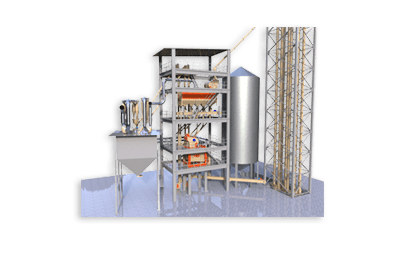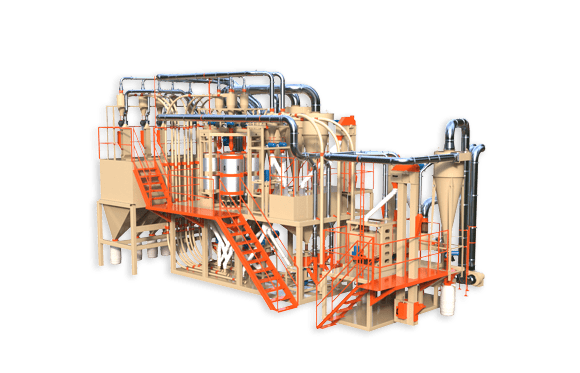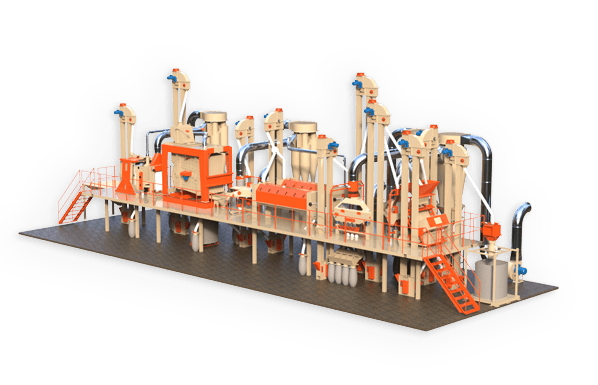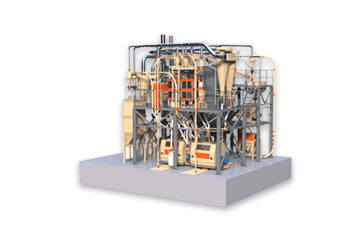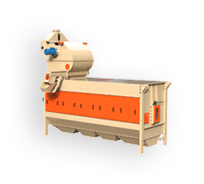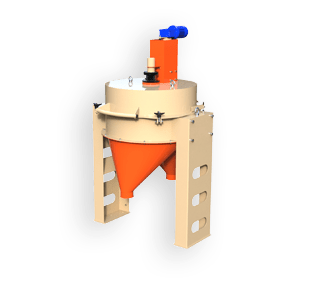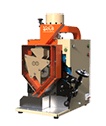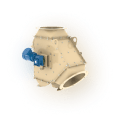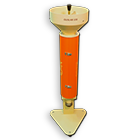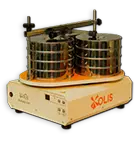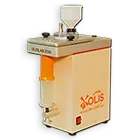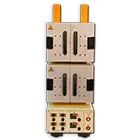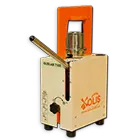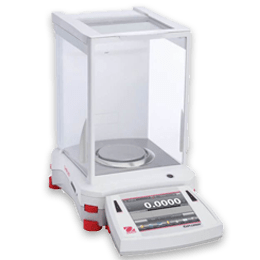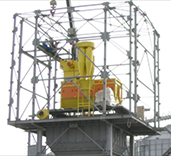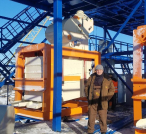INCREASING THE EFFICIENCY OF GRINDING SYSTEMS IN VARIOUS BAKERY GRINDING OF WHEAT
E.A. Dmytruk, O.P. Vereshchynskyi, E.I. Kharchenko
Introduction. 50…65% of the rolling line and 40…50% of the working surface of the sieves, which process up to 70% of the total amount of intermediate products, and spend 50… 60% of electricity from its total costs for grinding. Thus, reducing the length of the grinding process due to the intensification of the grinding of intermediate products is one of the main tasks of improving the efficiency of varietal bakery grinding of wheat. A well-known way of solving such a problem is to increase the yield of flour by using, in addition to rolling machines, equipment with an impact-abrasive action. At most domestic flour mills, systems that process products of the 1st quality, except for rolling machines, are equipped with P3-BER entoleators, and systems that process products of the 2nd quality are equipped with A1-BDG detachers. In accordance with the recommended grinding modes [1], the value of flour yield on systems of the 1st and 2nd quality should be, respectively, 60…70% and 40…50%. However, on most grinding systems, at the maximum possible “low” modes of rolling machines with micro-rough rollers, these indicators are 10…20% lower than the recommended ones [2], which indicates insufficient efficiency of such systems.At the same time, there are studies [3, 4] that confirm the effectiveness of selective grinding of products of different sizes and quality while ensuring high values of flour yield with the use of disintegrator-type machines. The working bodies of such equipment are a pair of pin discs that rotate to meet each other (disintegrators), or one of the discs is stationary (dismembrators) and is structurally the body of the machine. Disintegrators are characterized by a higher degree of grinding, as they implement a more significant force effect on the product. But dismembrators are much simpler in design, which determines their low cost, compactness and increased reliability. In the case of sufficient technological efficiency, such machines can serve as an alternative to existing entoleators and detachers during the construction of new and reconstruction of existing flour mills. The application of systems using dismembrators under adverse grinding conditions arising in reduced and, especially, short processing structures can be a special perspective. Usually, in such structures, the crushed products are not enriched, they represent a mixture of intermediate products of different quality and grain size and a significant under-sifting of flour. However, the lack of assessment of quantitative and qualitative performance indicators of rolling mill – dismembrator systems under the mentioned conditions makes their use impossible.
The purpose of this work is to determine the technological efficiency of systems rolling machine with a micro-rough surface of rollers – dismembrator when grinding products of different quality and feasibility of use in grain grinding structures with different development.
Research methods. The research was conducted in the production conditions of the flour milling plant AP “Protos” LLC (Ovidiopol, Odesa region), which implements a short structure of grinding husked grain without enrichment. The intermediate product of the 1st quality, which was formed in the shredding process, and the product of the 2nd quality, which was formed in the grinding and shredding processes, were successively crushed in a roller machine with different values of the inter-roller gap, and then in an ECM-1.5 dismembrator [5] with different rotor rotation frequency. The maximum possible and completely absent flour yield was obtained as the limits for setting the roller gap. The limits of setting the frequency of rotation of the rotor were the results of grinding in view of their quantitative and qualitative indicators. At the same time, the fractional composition of the studied products, the yield of flour after the rolling machine, as well as after the rolling machine and the dismembrator, the ash content of the obtained products and the whiteness of the flour were determined by standard methods.
Results and Discussion. In the table 1 shows the quality indicators of the crushed intermediate product of the first quality, which in terms of particle size is a mixture of grain and flour products of various fractions and flour.
Table 1
Characteristics of the crushed product of the first quality
|
Product |
Content, % |
Ash content, % |
| Coarse grain |
9.0 |
1.28 |
| Medium grain |
26.0 |
0.96 |
| Fine grain |
43.0 |
0.92 |
| Dunst |
15.0 |
0.71 |
| Flour |
7.0 |
0.67 |
| Total mix |
100.0 |
0.91 |
It should be noted that the maximum value of the flour product (table 2), which is provided by the dismembrator and the entire grinding system, is much higher than the value that is usually provided by the entoleator of the P3-BER type and the grinding system, even when working as part of a complete flour mill [2] .
Table 2
Production of flour and indicators of its quality after grinding the product of the first quality
|
After the machine |
After the machine and dismembrator |
|||||||||||||
|
nd= 33 s=1 |
nd= 42 s=1 |
nd= 50 s=1 |
nd= 58 s=1 |
|||||||||||
|
product, % |
ash content, % |
whiteness, um.od. P3-BPL |
product, % |
ash content, % |
whiteness, um.od. P3-BPL |
product, % |
ash content, % |
whiteness, um.od. P3-BPL |
product, % |
ash content, % |
whiteness, um.od. P3-BPL |
product, % |
ash content, % |
whiteness, um.od. P3-BPL |
|
40 |
0.40 |
62 |
64 |
0.46 |
66 |
67 |
0.49 |
62 |
70 |
0.49 |
60 |
71 |
0.50 |
59 |
|
31 |
0.41 |
61 |
53 |
0.45 |
65 |
56 |
0.50 |
62 |
59 |
0.50 |
62 |
62 |
0.52 |
61 |
|
10 |
0.55 |
56 |
30 |
0.53 |
58 |
33 |
0.56 |
58 |
36 |
0.57 |
57 |
39 |
0.61 |
56 |
|
0 |
0.67 |
53 |
16 |
0.59 |
51 |
18 |
0.71 |
50 |
20 |
0.73 |
50 |
25 |
0.71 |
50 |
When the rotation frequency of the dismembrator rotor increases from 33 to 58 s=1, the flour yield increases at all set operating modes of the rolling machine. As the output on the machine decreases, the output on the dismembrator also decreases. The value of the total product is much higher with higher indicators of the product on the rolling machine. When the total product is reduced due to the reduction of the product on the machine, the quality of the flour decreases. This is explained by the fact that with a low yield, the degree of grinding decreases, and therefore, the entry into the flour of the inner layers of particles of intermediate products, that is, pure endosperm. A particularly significant increase in the increase in ash content and decrease in the whiteness of flour occurs in the absence of product on the rolling machine. In this case, the surface layers of particles of intermediate products with a high content of shells are mainly separated in the dismembrator. When increasing the rotation frequency of the rotor of the dismembrator, the quality of the flour decreases somewhat, which is a natural result of an increase in the impact load, which leads to some shredding of the shells.
The subject of special interest is that in most cases, processing in a dismembrator is characterized by an increase in the ash content of flour and its whiteness. This is explained by the fact that the effect of shock loads in the dismembrator leads to crushing, separation from the shell particles and entry into the flour not only of the endosperm, but also of the high-ash non-pigmented aleurone layer. Therefore, increasing the endosperm yield increases the whiteness of the flour, and the aleurone layer increases its ash content.
The results of grinding the product of the 2nd quality (Table 3), which is also a mixture of products of different fractions and flour, are given in Table. 4.
Table 3
Characteristics of the crushed product of the second quality
|
Product |
Content, % |
Ash content, % |
| Fine grain |
29.0 |
3.14 |
| Dunst |
50.0 |
1.28 |
| Flour |
21.0 |
0.98 |
| Total mix |
100.0 |
1.76 |
The data analysis (Table 4) shows that the main regularities determined during the grinding of the product of the first quality are also valid during the processing of the product of the second quality. At the same time, due to the significant content of shell particles in the product being processed, the previously considered effect of entering flour particles of the aleurone layer can be seen more clearly. In contrast to the processing of the product of the 1st quality, the reduction of the flour yield in the rolling machine leads to its increase in the dismembrator, which is explained by the processing of the product depleted of endosperm.
Table 4
Production of flour and indicators of its quality after grinding the product of the second quality
|
After the machine |
After the machine and dismembrator |
||||||||||
|
nd= 33 s=1 |
nd= 42 s=1 |
nd = 50 s=1 |
|||||||||
|
product, % |
ash content, % |
whiteness, death od. P3-BPL |
product, % |
ash content, % |
whiteness, death od. P3-BPL |
product, % |
ash content, % |
whiteness, death od. P3-BPL |
product, % |
ash content, % |
whiteness, death od. P3-BPL |
|
29 |
0.66 |
41 |
48 |
0.95 |
46 |
51 |
0.97 |
43 |
54 |
1.09 |
42 |
|
19 |
0.72 |
30 |
37 |
1.01 |
33 |
42 |
1.04 |
32 |
45 |
1.12 |
31 |
|
0 |
0.98 |
8 |
19 |
1.09 |
23 |
24 |
1.13 |
20 |
29 |
1.16 |
18 |
As a result of mathematical processing of experimental data, regression equations were obtained that determine the yield of flour B1 and B2 after the roller machine and the ESM-1.5 dismembrator from the flour product in the roller machine and the rotation frequency of the dismembrator rotor when grinding products, respectively, of the 1st and 2nd quality:
where BBC is the product of flour after the rolling machine, %;
n – frequency of rotation of the dismembrator rotor, c=1.
Conclusions.
1. The results of the research and their analysis prove the possibility of effective grinding of a mixture of grains, dunts and flour, forming products of the 1st and 2nd quality in short structures for the production of graded bakery flour on systems consisting of a roller machine with micro-rough rollers and a dismembrator with adjustable frequency of rotation of the rotor.
2. The specified systems can also be effectively used in reduced and developed structures, since their flows of crushed products are characterized by better properties for selective crushing in comparison with the studied ones.
3. Mathematical equations obtained as a result of research can be used for approximate engineering calculations of the material balance of the grinding process flows.
Literature:
1. Kroshko G.D. Rules for the organization and management of the technological process at flour mills [Text] / G.D. Kroshko [etc.]. – K.: Vipol, 1998. – 145c.
2. Kulak V.G. Flour mill plants with complete equipment [Text] / V.G. Kulak, B.M. Maksymchuk, A.P. Chakar – M.: Kolos, 1984. – 255c.3. Imminent A.F. Issledovanie technological efficiency of grinding food and feed products in disintegrators and dismembrators [Text]: autoref. thesis … candidate technical of Science / A.F. Inevitable – Tallinn, 1970. – 34c.
4. Maksymchuk B.M. Experience in the operation of high-performance machines of impact-abrasive action [Text] / B.M. Maksymchuk, A.F. Imminent / Series “Flour mill and elevator industry”: express inform. – M.: TsNIITEI Minzaga of the USSR, 1983. – 28c.
5. Dismembrator ESM-1.5 [Elect. resource]. – Access mode:
https://www.olis.com.ua/equipments/proizvodstvomukiikrup/ientoleytordismembratoriesm07iesm15/
Author’s reference:
1. Dmytrouk Yevhen Adamovych, Doctor of Science, Professor, Department of Grain Preservation and Processing Technology, National University of Food Technologies
2. Oleksandr Pavlovich Vereshchynskyi, Ph.D., General Director, OLYS LLC, Odesa
3. Kharchenko Evgeny Ivanovych, Ph.D., Associate Professor, Department of Grain Preservation and Processing Technology, National University of Food Technologies
Key words: flour production, grinding process, dismembrator


